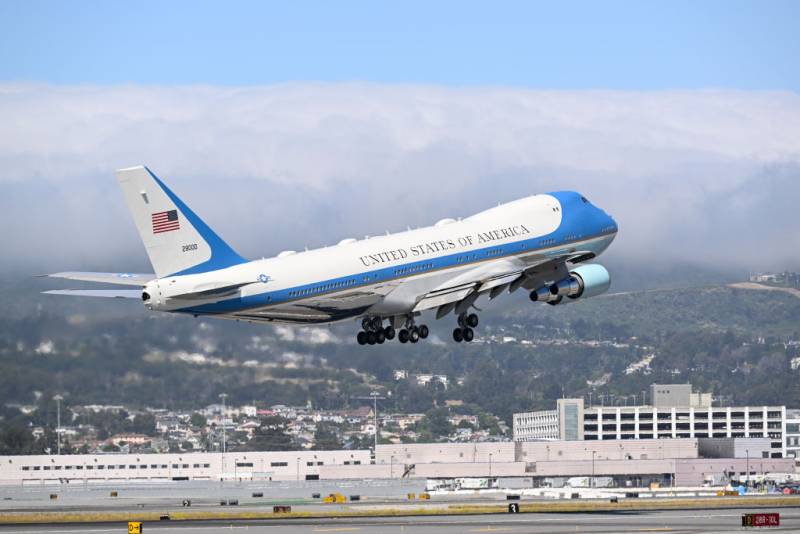“We do expect higher-than-normal private aircraft activity during APEC,” SFO spokesperson Doug Yakel said. He added that overall airport traffic is still slightly below pre-pandemic travel. However, it’s expected to exceed 2019 levels by the end of this year.
Thousands of climate and human rights activists have already started protesting the event, which kicked off on Nov. 11.
“APEC is simply a tool of big business and the ruling elite to increase their profits at the expense of people and the planet,” Brandon Lee, with the International Coalition for Human Rights in the Philippines, said in an email statement. “It will be a waste of millions of taxpayer dollars, and it will only result in further worker exploitation and environmental destruction.”
Airplanes jetting around the world create major air pollutants like carbon dioxide, which contribute to climate change. Other aircraft emissions, like nitrogen oxides, water vapor and sulfate aerosols, also cause significant chemical reactions in the atmosphere and warm the Earth’s surface at nearly three times the rate of carbon dioxide alone.
Klöwer advised KQED on the APEC-related carbon footprint estimate and has studied aircraft emissions tied to big conference travel.
Before the pandemic, many academics and government officials were frequent fliers, he said. Since then, he’s researched ways major conferences might reduce their carbon footprint, including boosting virtual attendance and promoting regional in-person hubs.
Emissions tied to even massive conferences like APEC, however, make up just a fraction of other common sources of carbon dioxide, such as heavy commuter traffic and refineries.
Landfills, power plants, refineries and similar facilities across California emitted more than 93 million metric tons of carbon equivalent emissions in 2022, according to data from the Environmental Protection Agency.
Many climate experts also see a benefit to flying for in-person diplomacy work that can lead to more impactful, larger-scale climate solutions.
Those are people like Dr. Daniel Kammen, a professor and founding director at UC Berkeley’s Renewable and Appropriate Energy Laboratory. He also previously served as the U.S. State Department’s energy envoy, working on energy and climate partnerships across the Americas.
“It is certainly a tiny drop in the bucket compared to jet fuel being spent in military operations or just big wigs traveling around all the time,” Kammen told KQED. “For something like this, a big Asia-Pacific summit at a time of high tensions and between the U.S. and China, the carbon impact is actually very useful. But it’s good to do the numbers so we can learn what our carbon footprint is.”
Kammen compared his thoughts on the event to wind turbines, a popular renewable energy source that often gets dinged for harming birds that fly into the giant propellers. But on average, cars kill far more birds than wind turbines do, he said.
“Wind turbines kill birds. That’s bad. But remember, cars kill much more,” Kammen said.
Calculating how many birds are killed by wind turbines — or the carbon footprint of dignitaries flying around the globe — provides important context and has value, he said.
“Take the Climate Protocol in Paris. Were those worth the carbon spent? Yes, in my view,” Kammen said. “But we need to do the numbers so we can learn.”
Air travel is often necessary, especially among global leaders who can influence change on a large scale. But, Klöwer said, governments and individuals can reduce their emissions significantly by reducing excessive air travel tendencies.
“Going from economy to first class or in a private jet makes a huge difference in your emissions. We aren’t talking about not traveling at all, but the convenience of private luxury,” he said. “It’s a convenience of the rich in a world where we can’t afford that.”

